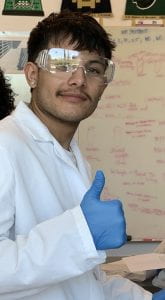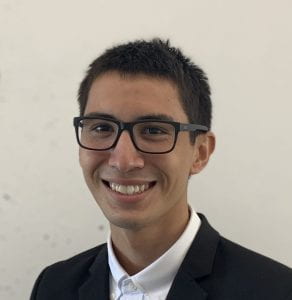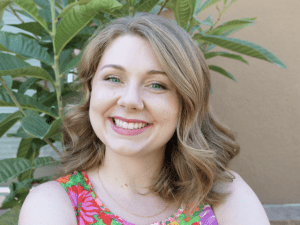Current Lab Members
 Chris Kim received his A.B. in geology from Princeton University and his Ph.D. in geological and environmental sciences from Stanford University. Following a joint post-doctoral research appointment with Lawrence Berkeley National Laboratory and UC Berkeley, he joined the Chapman University faculty where he is currently professor of earth and environmental sciences and associate dean of academic programs in the sciences. His research interests include arsenic speciation and distribution in abandoned mine lands and the reactive properties of iron oxyhydroxide nanoparticles. He is a recipient of an NSF-CAREER award for early career faculty as well as the Henry Dreyfus Teacher-Scholar Award based on “accomplishment in scholarly research with undergraduates, as well as a compelling commitment to teaching”.
Chris Kim received his A.B. in geology from Princeton University and his Ph.D. in geological and environmental sciences from Stanford University. Following a joint post-doctoral research appointment with Lawrence Berkeley National Laboratory and UC Berkeley, he joined the Chapman University faculty where he is currently professor of earth and environmental sciences and associate dean of academic programs in the sciences. His research interests include arsenic speciation and distribution in abandoned mine lands and the reactive properties of iron oxyhydroxide nanoparticles. He is a recipient of an NSF-CAREER award for early career faculty as well as the Henry Dreyfus Teacher-Scholar Award based on “accomplishment in scholarly research with undergraduates, as well as a compelling commitment to teaching”.
 Ratish Ragavendiran is a fourth year Applied Human Physiology major and English Minor. He joined the KEG lab in the spring of 2023. While in the KEG lab, he has been is working on current and future experiments related to the environmental chamber, focusing on assessing the bioaccessibility of arsenic in sediments that are subjected to various temperature and humidity conditions.
Ratish Ragavendiran is a fourth year Applied Human Physiology major and English Minor. He joined the KEG lab in the spring of 2023. While in the KEG lab, he has been is working on current and future experiments related to the environmental chamber, focusing on assessing the bioaccessibility of arsenic in sediments that are subjected to various temperature and humidity conditions.
 Andrew Tahhan is a third-year biology major and a music technology minor. He joined the lab in the fall of 2023. In the lab, Andrew is working on the bioacessibility of Empire Mine waste particles. At Chapman, he is the President of the Pre-Dental Society and Director of Communications for Mortar Board Honor Society.
Andrew Tahhan is a third-year biology major and a music technology minor. He joined the lab in the fall of 2023. In the lab, Andrew is working on the bioacessibility of Empire Mine waste particles. At Chapman, he is the President of the Pre-Dental Society and Director of Communications for Mortar Board Honor Society.
 Cristina Inbonden is a third-year Health Sciences and French double major. She joined the lab in fall of 2o23. In the lab, Cristina studies the rate of adsorption and desorption of various types of salts to iron oxyhydroxide nanoparticles. At Chapman, she served as the Crean College Senator for the Student Government Association, she is a member of the Women’s soccer team, she is a Tour Guide for the Office of Admission, and she is part of the Chapman First Aid Team.
Cristina Inbonden is a third-year Health Sciences and French double major. She joined the lab in fall of 2o23. In the lab, Cristina studies the rate of adsorption and desorption of various types of salts to iron oxyhydroxide nanoparticles. At Chapman, she served as the Crean College Senator for the Student Government Association, she is a member of the Women’s soccer team, she is a Tour Guide for the Office of Admission, and she is part of the Chapman First Aid Team.
 Lea Vetter is a second-year Biochemistry and Molecular Biology major. She joined the KEG lab in the fall of 2023. In the KEG lab, she studies the bioaccessibility arsenic from the Empire Mine waste particles.
Lea Vetter is a second-year Biochemistry and Molecular Biology major. She joined the KEG lab in the fall of 2023. In the KEG lab, she studies the bioaccessibility arsenic from the Empire Mine waste particles.
of Since then, he has worked with ion selective electrodes characterizing the rate of adsorption and desorption of copper ions to iron oxyhydroxide nanoparticles. Parallel to Sarah’s work, Sebastian will be continuing investigation of the adsorption and desorption of the nanoparticles in the presence of different types of salts. Sebastian serves as the treasurer for the Chapman Chess Club, is an active member of the Schmid Student Leadership Council, and works as an office assistant in the Davis Community Center.
 Miguel Olivas is a second-year Chemistry major and Spanish minor. He joined the KEG lab during the summer of 2023. In the lab, he has worked with ion-selective electrodes characterizing the rate of adsorption and desorption of copper ions to iron oxyhydroxide nanoparticles. At Chapman, he is also a part of the promising future and first-generation ambassadors.
Miguel Olivas is a second-year Chemistry major and Spanish minor. He joined the KEG lab during the summer of 2023. In the lab, he has worked with ion-selective electrodes characterizing the rate of adsorption and desorption of copper ions to iron oxyhydroxide nanoparticles. At Chapman, he is also a part of the promising future and first-generation ambassadors.
Mariah Tsuruda
 Micah Char is the current KEG Lab Manager. He graduated in 2023 with a B.S. in Applied Human Physiology from Chapman. He joined the KEG lab in the interterm of 2020, and this year marks the start of his 4th year with the lab! his work in the lab thus far has examined the characterization of arsenic species found in mine waste and correlating it to potential risks to human health.
Micah Char is the current KEG Lab Manager. He graduated in 2023 with a B.S. in Applied Human Physiology from Chapman. He joined the KEG lab in the interterm of 2020, and this year marks the start of his 4th year with the lab! his work in the lab thus far has examined the characterization of arsenic species found in mine waste and correlating it to potential risks to human health.

Dr. Miranda Aiken started Fall 2022. Dr. Aiken is in the Grand Challenge Initiative Post-Doctoral Fellowship. Her previous work investigated the redox behavior of manganese and iron oxides in diffusion-limited environments. She plans to continue to study the behavior of manganese in the environment, specifically the fate and transport of geogenic aqueous manganese in groundwater systems. Her overall goal with this research is to bridge the current understanding of contaminant geochemistry and how this may impact water quality and potential risks to human health.
